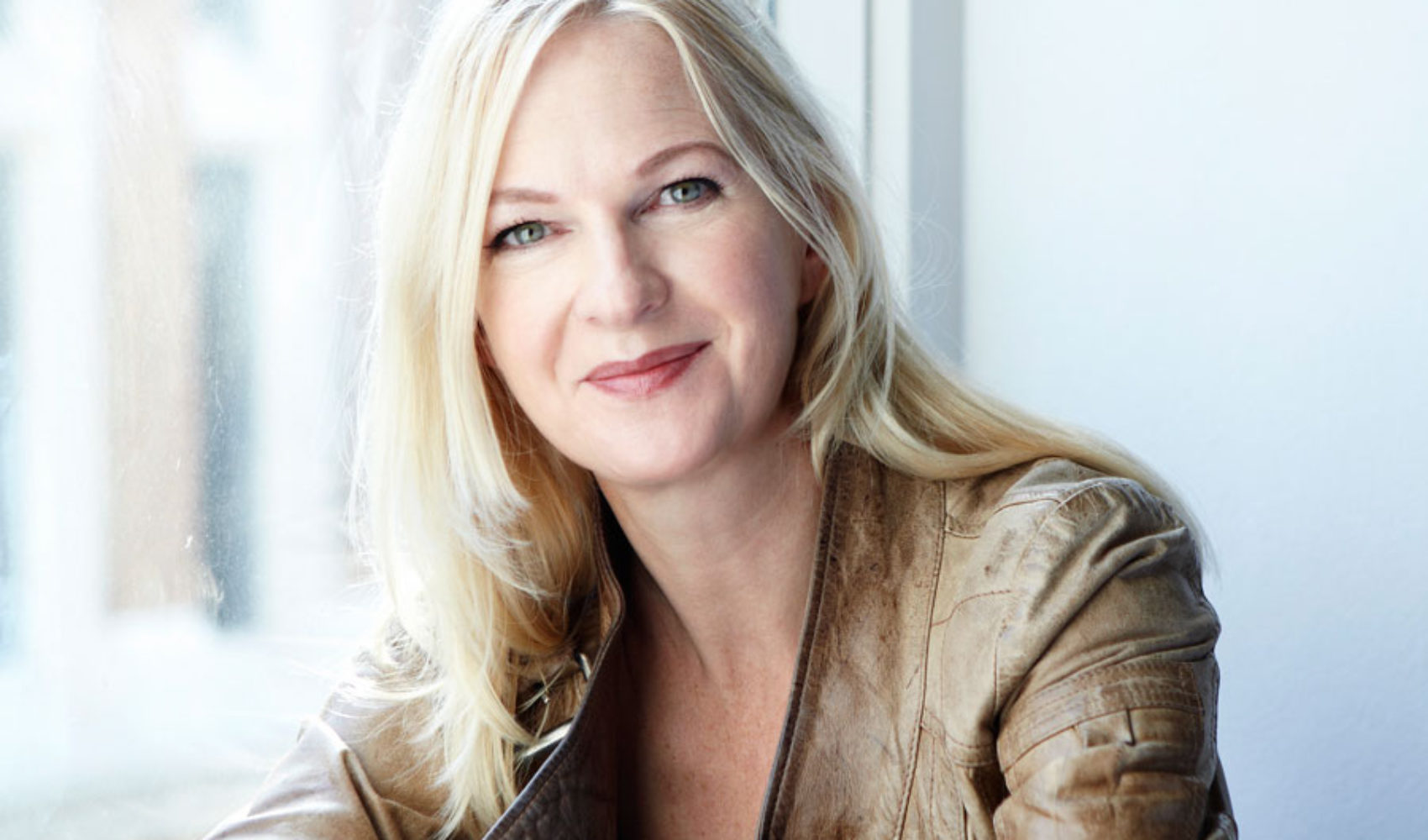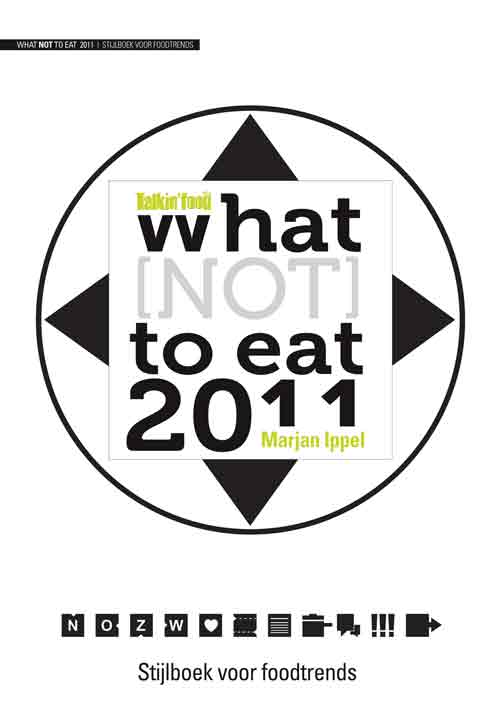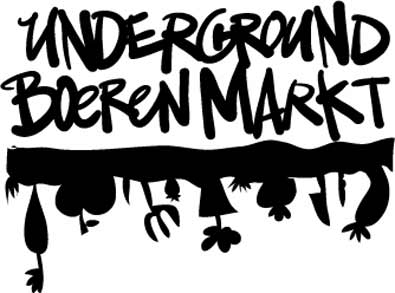
What is a food trend analyst?
ETH: What is a food trend? Can you give us a definition?
Marjan: A food trend is one of the first signs of change in an economy, society or political environment. The avant-garde out on the streets tend to have tentacles that pick up these changes at a very early stage and are able to translate them into something new. Whether it’s fashion, design or food… The avant-garde has got the sensibility towards new things. When other people pick this up from them it eventually becomes a trend. Food trends work very much like fashion trends. I always say ‘Food equates to Fashion’. In both areas trends are embedded in an economic, political or social context. It’s never an isolated this is ‘in’ and this is ‘out’.
ETH: How do you gather information on new developments on new food trends?
Marjan: I observe what happens on the streets. I pick it up very early because I am at it 24 hours a day, seven days a week. Then you gradually develop a feeling for it. I travel at lot and I also speak to a lot of people, not only chefs but also food producers, artists and creative people. I search the internet for new developments. It is a 24 hour job.
ETH: What does it require to turn an ingredient, a dish or the shopping habits of a few into a trend that is followed by many?
Marjan: It needs this embedment in a broader context. The more contextual hooks that are present, the bigger the chance something will become a real trend.
ETH: Could you give us an example?
Marjan: Slow food for example. The idea of slow food and sustainability, the emphasis on seasonal and regional products, these concepts are not avant-garde any more. They have reached the center of society because the world is changing; the views people have about food are changing. The idea of slow food has also moved into fashion and many other areas.
Different trends in different countries?
ETH: In Italy and Germany the slow food movement has been active for many, many years. Is there a difference in food trends in different countries? Are other trends more prevalent in the Netherlands than for example Germany or Italy?
Marjan: Yes. Different countries have different economical, social, and political contexts. Besides this every country has its own history. These factors determine what is going to be picked up in a country and what is not. You can see that in parts of the United States such as Texas or California, neighboring countries like Mexico have a huge influence on what’s served on a plate.
ETH: In your book “What (not) to eat 2011” you have gathered the latest food trends. What are the most prominent trends we will see this year?
Marjan: Vegetables are of course really in the picture now. But also what I call low fidelity food. I went to a food event in Ostend last weekend where top Chef’s from all over Europe and beyond gathered. They all cooked with what I call ‚low‘ ingredients, very basic, ingredients which they took to an haute cuisine level. Haute cuisine used to be about blue fin tuna fish, truffles, foie gras and caviar a couple of years ago. But now, haute cuisine is about simple, organic ingredients like mosses, ashes, and hay. That was unimaginable a couple of years ago. This trend started of course with the chef Rene Redzepi in his Copenhagen restaurant Noma.
Punk Food
ETH: Any other significant trends for 2011?
Marjan: Something that is really gaining popularity is what I call punk food. People are very dissatisfied with how the giant food companies are processing food. They have put poisons into our food, they have kept food production hidden away from us so that we have no control or say in what they are doing to our food. Of course we, the consumers, let this happen. We wanted cheap food. But there are more and more people who don’t want that anymore. They want to make their own food. They want to have a say in what they eat and they want to know what they are eating. So they have started up their own cottage industries where they make small batches of food from their home. They sell it online, they sell it underground and they sell it on the street, providing an alternative to a market monopolized throughout decades by the big food companies.
ETH: You are also active in the punk food avant-garde. You organized the first Underground Farmer’s Market in the Netherlands in 2010.
Marjan: Last weekend I had the third one.
ETH: In what way is your concept different to a normal local food market which one can find in almost every Dutch city?
Marjan: It’s completely different. The traditional farmer’s markets are very good and I applaud them very much. But it is rather expensive to rent a stall to sell your products. You have to be quite big to be profitable. The people who produce food from their homes make very small amounts and cannot pay high prices for stalls. They don’t make food for a profit. They make food the best way they can with the best ingredients they know. They use traditional recipes and artisanal methods to create new things. They will not say okay I’ll skip this ingredient because then my product will be 15 cents cheaper. It is these micro producers that I provide a platform for because they have never been given a stage before.
ETH: Why not?
Marjan: Because of inconsistent European regulations that kill traditional ways of preparing food.
ETH: A market needs vendors and customers. How did you bring the two groups together if it happens underground?
Marjan: I do it all through Twitter and this is also how most other food punks communicate. We choose our audience instead of being chosen.
Marmelade and sausages
ETH: What sort of products is sold at the underground farmer’s market? Are they completely different from what you get in a super market?
Marjan: The products are unique and they vary from blood orange marmalade to home-made truffles to foraged food from the city to homemade sausages. Last weekend the most frequently asked question was ‘Where else can I buy these wonderful products?’ And the most frequently given answer was ‘Nowhere’.
ETH: It was your third underground farmer’s market. Can you see an increase in customers? Does the concept have the potential to become a new trend in the Netherlands or other countries?
Marjan: In San Francisco, in Chicago, in London they have underground farmer’s markets as well. I have a limit. I don’t want more than a certain amount of visitors to the market because I want it to be small. I want it to remain non-commercial and I want it to remain niche. If it gets bigger then you need to compromise and I don’t want to compromise.
ETH: Looking into the future what do you think: Are we all turning into micro-farmers and micro-brewers or will our eating habits dominated by a few global players?
Marjan: For most people I think food production will be a weekend thing. But I think it’s good. Even, if you do it only once a year. It changes your way of looking at food. As soon as you start growing or making your own food you see the effort that is required. That gives you a different view on food when you go to the supermarket. You also feel differently about throwing food away. You know what it takes to grow and to make it. We throw out so much food that we could easily feed the whole world with it.
ETH: Thank you very much for sharing your insights on food and food trends.
Interested in more interviews? Try Amsterdam Food Blogger Toni Manzel and Stijn Nieuwendijk, sustainable olive oil company Zait co-founder Thomas Fuhlrott and custom made kitchen builders Herwig Danzer and Gunther Münzenberg.


Schreibe einen Kommentar